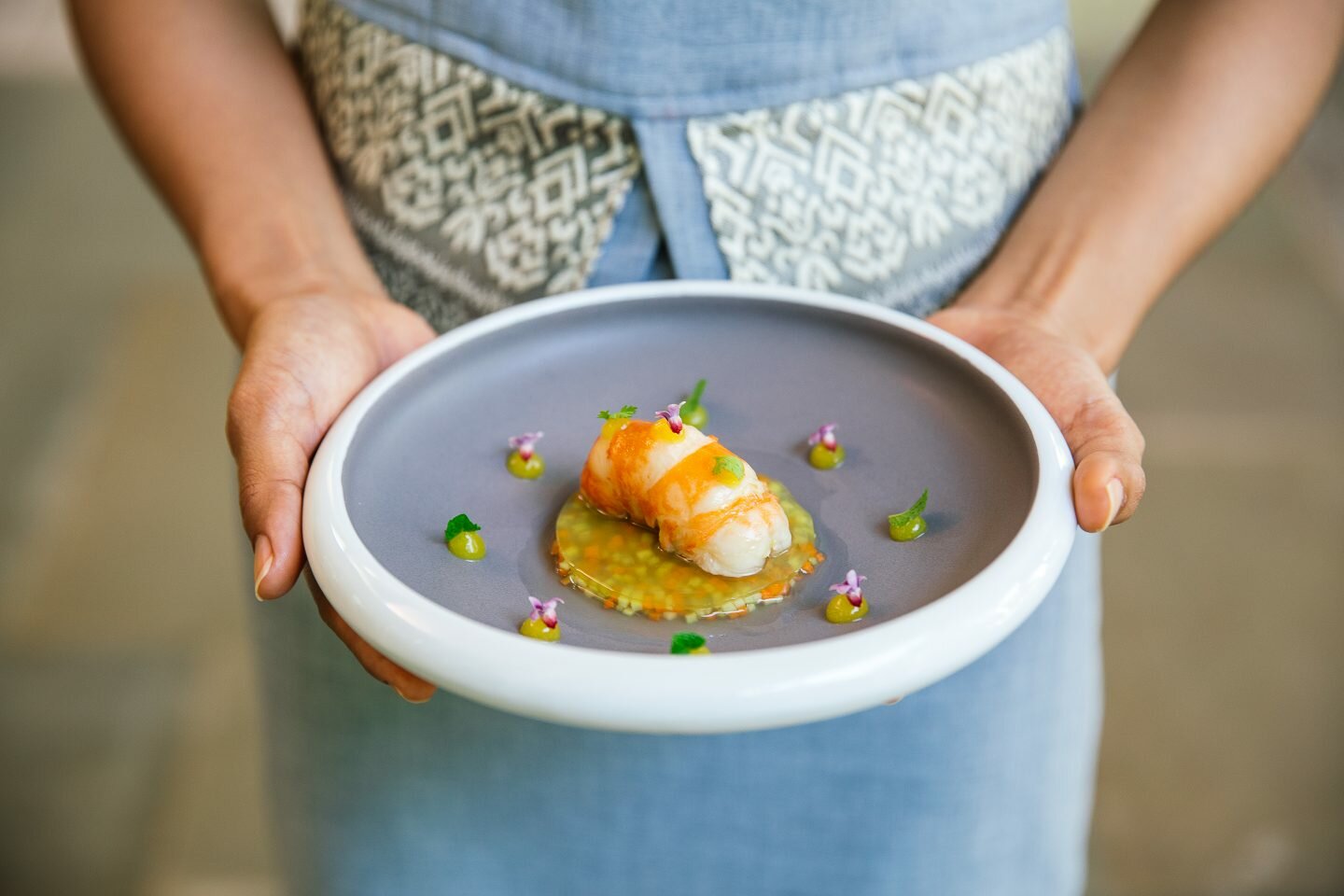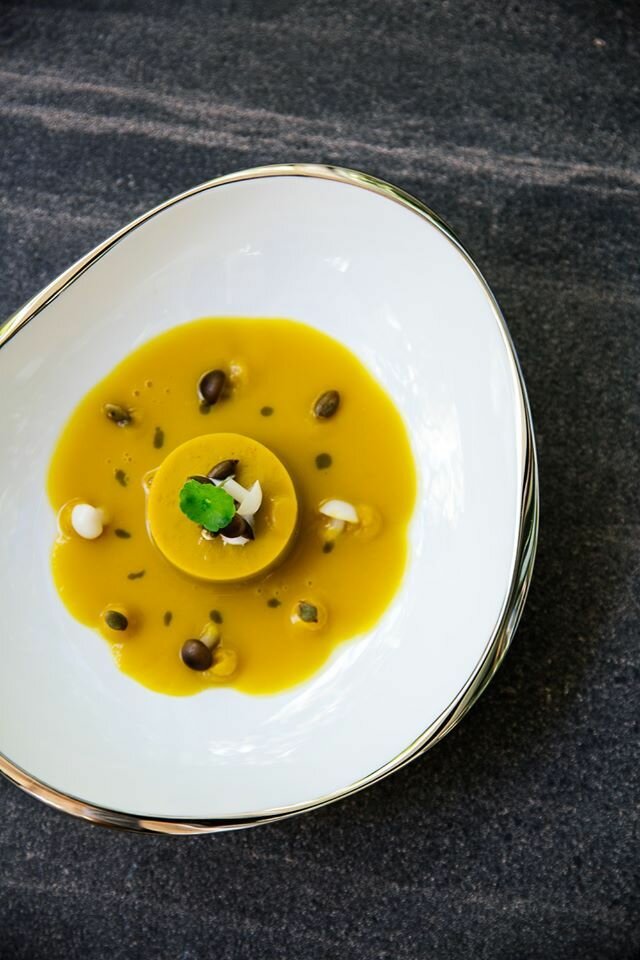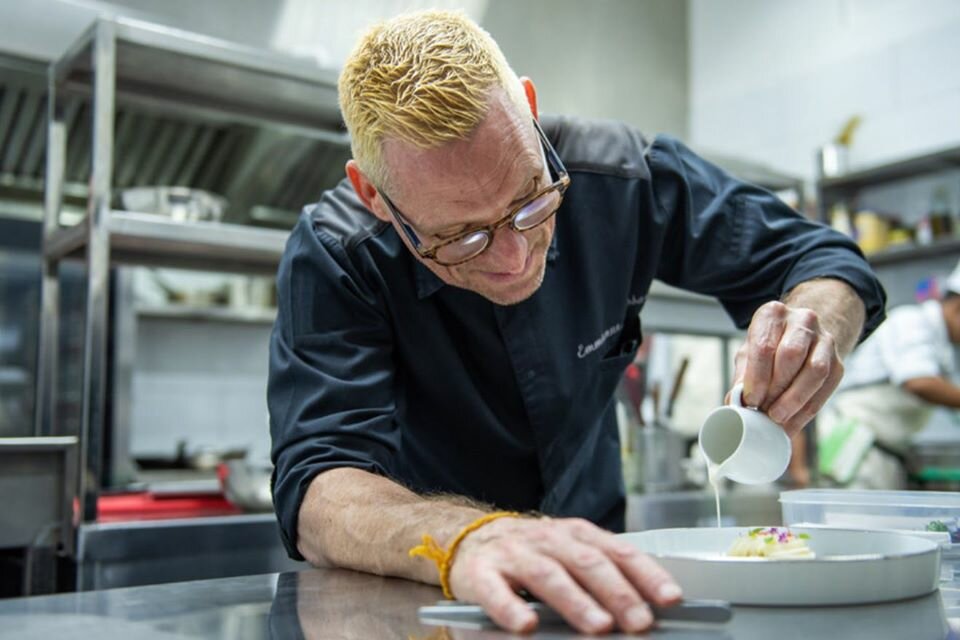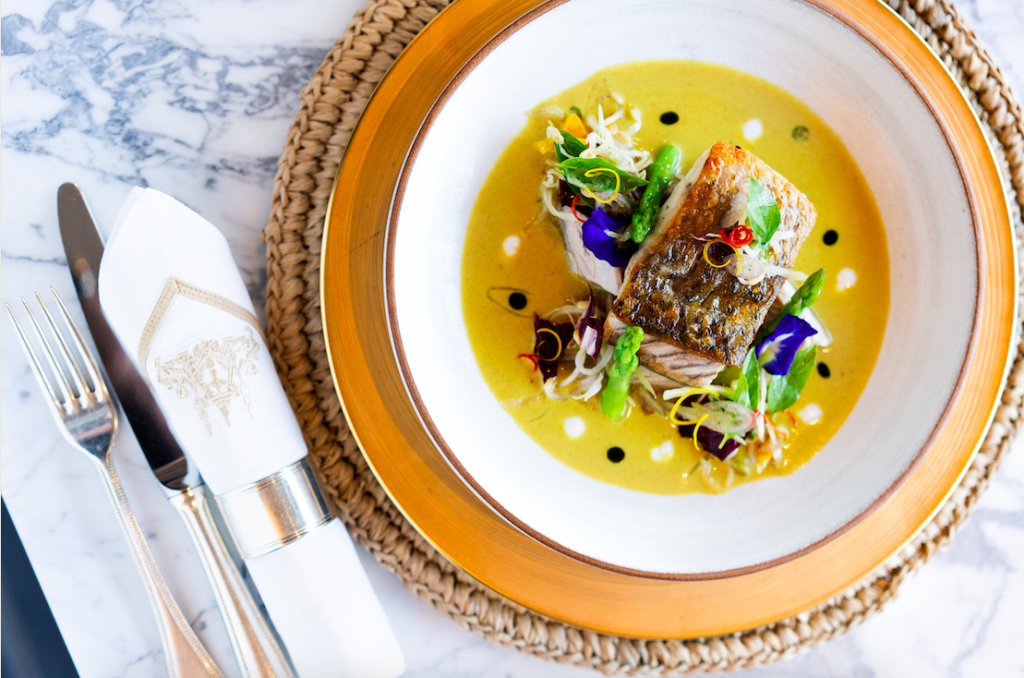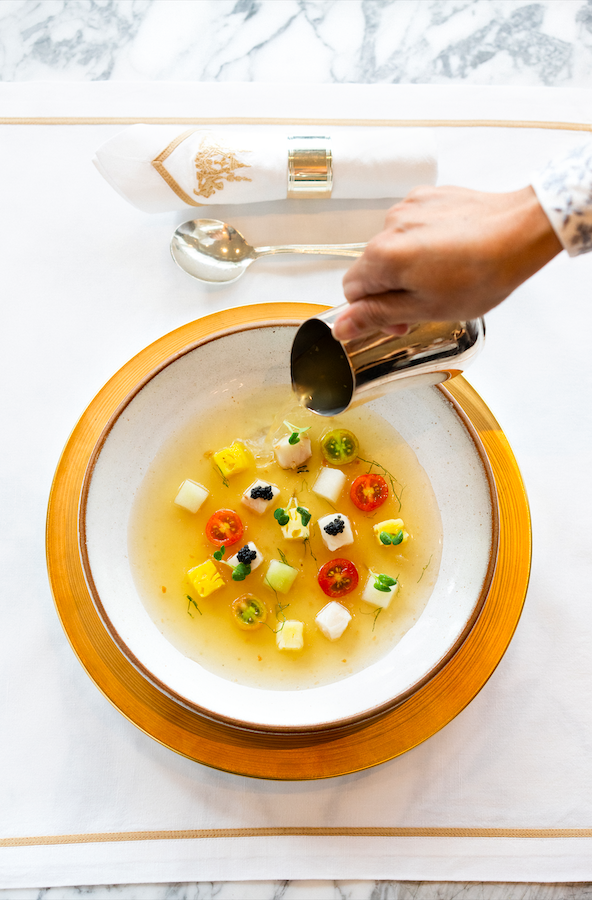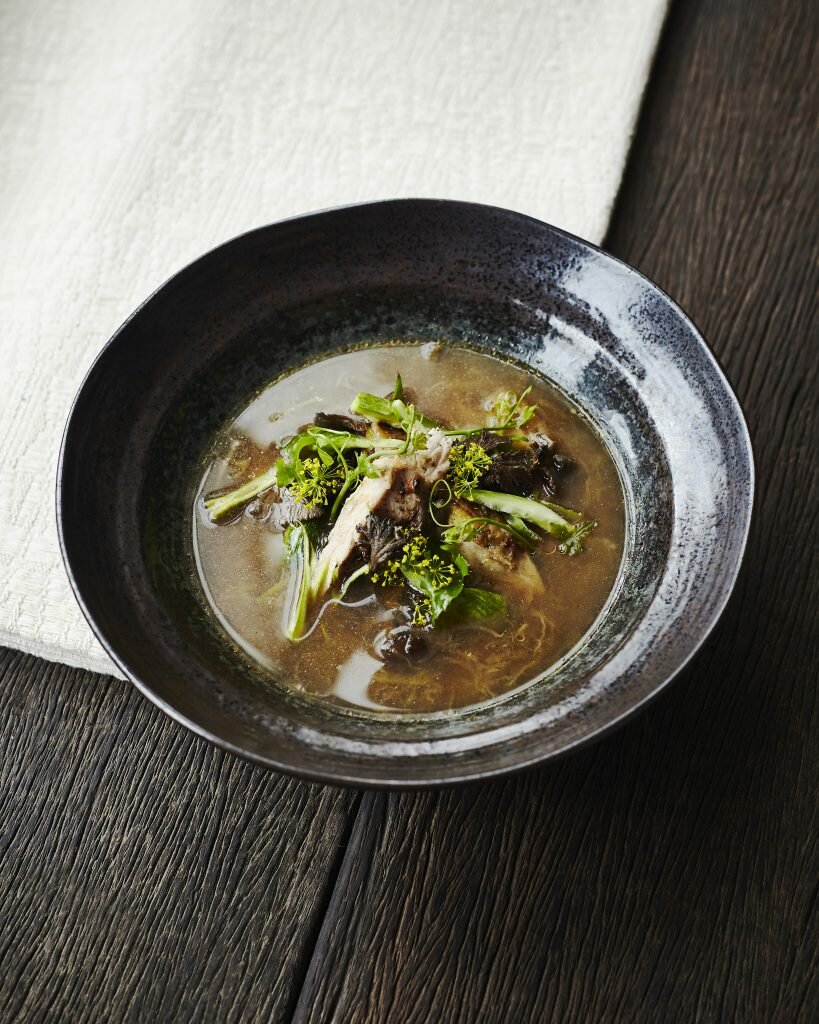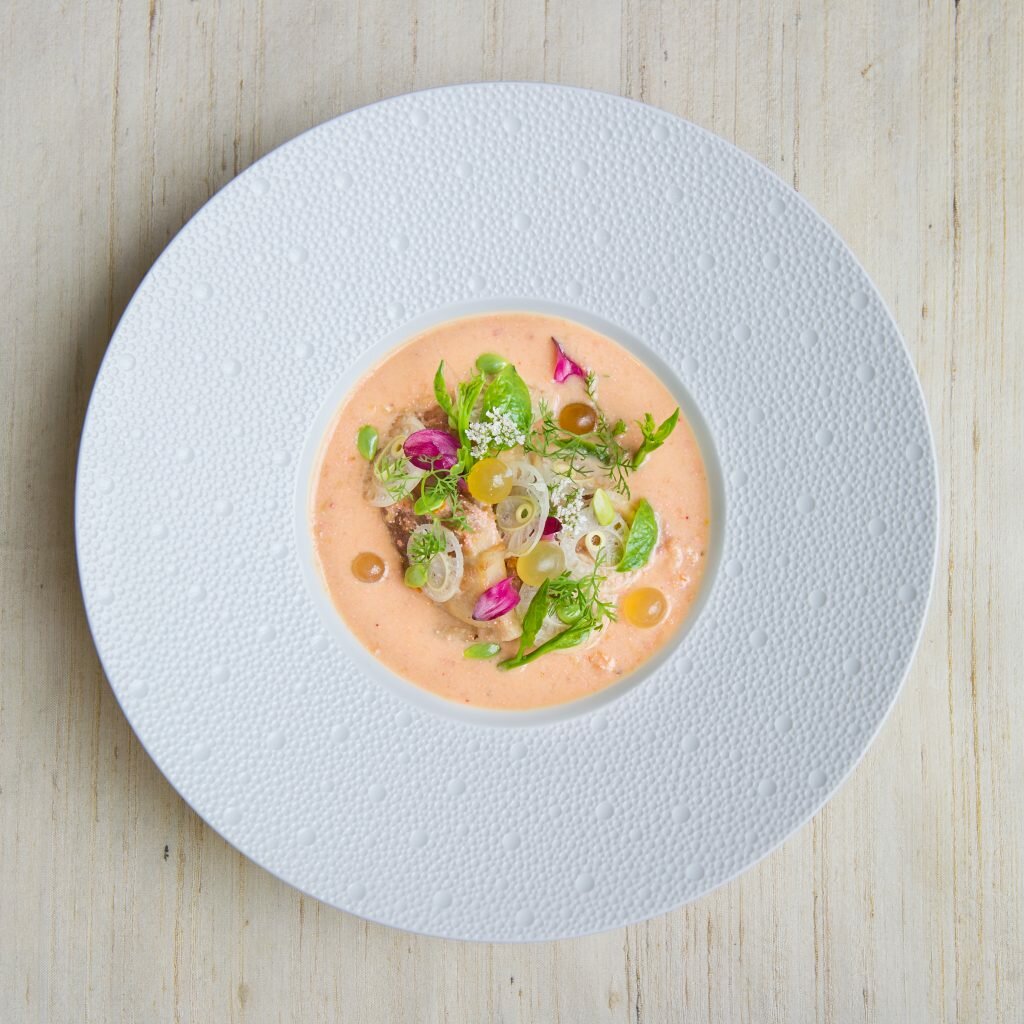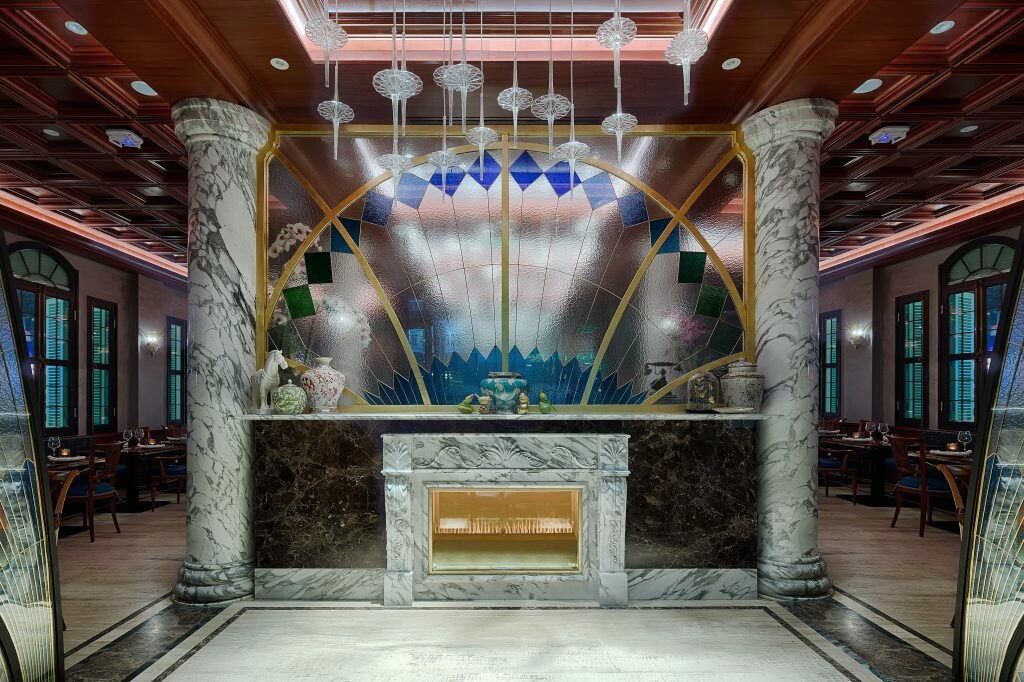In March, when Asia’s 50 Best Restaurants unveiled its annual listing of avant-garde kitchens, its inherent bias was once again exposed. Another rundown dominated by the region’s ritziest cities — Singapore, Tokyo, Shanghai, Bangkok — the list zoomed in, with customary elitism, on pioneers of experimental cuisine with exotic design and wallet-busting menus. If such an approach has favoured more adventurous chefs, it has also left behind entire culinary cultures — in particular those where distinctive, complex cuisine often comes served in modest surroundings.
While Asia’s Best 50 is far from the only barometer of culinary quality, in this listicle-obsessed era it’s increasingly the most influential. By way of challenging the regional imbalance, super chefs in Cambodia, Laos and Vietnam have in recent months sought to marry the fine- dining paradigm to time-honoured recipes — updated via modern techniques and artistic styling — which hark back to the agricultural era of their forefathers.
February saw the opening of Tusita (a Sanskrit word used in Buddhism to denote “contentment”) near Siem Reap’s city centre, overseen by Michelin-starred Belgian chef Emmanuel Stroobant.
The restaurant is a work of art that’s dripping with bling, sporting glitzy chandeliers, water features and lavish silver ornamentation — a jewel box encased within an anteroom beside the Borei Angkor hotel’s foyer.
While Tusita oozes glamour and ambition from every pore, its culinary roots are far more humble, focusing on recipes that encompass fundamental elements of Khmer cuisine by way of progressive cooking methods.
Befitting a chef who’s a dedicated yoga practitioner and health guru — and whose trademark holistic cuisine is said to incorporate divinity, society and the natural world — the restaurant’s three tasting menus loftily namecheck three central tenets of Buddhism: Inspiration, Reincarnation and Enlightenment. The latter is a 10-course banquet that takes in produce from all around Cambodia, with Khmer herbs, Kampot pepper and crab, Takeo river prawn, Sihanoukville scallop and Siem Reap chocolate all represented.
While Tusita’s references to spirituality and the maximalist interior design may appear an odd mismatch, there’s a compelling argument to be made that Indochinese food is only likely to reach greater levels of recognition within such showy confines.
Siem Reap, widely considered the country’s petri dish for culinary experimentation, has seen fine homegrown restaurants flourish since the millennium, only to be largely overlooked by an international audience, with the sole exception of Cuisine Wat Damnak, Joannes Riviere’s cosy fine-dining stilt house, which scraped the Best 50 in 2016. Amazingly, this has been the region’s sole representative on the list in the last five years.
An equally swish, more classicist outing awaits at 1932, the eight-month-old signature restaurant at Siem Reap’s storied guesthouse, Raffles Grand Hotel d’Angkor (the titular date refers to the hotel’s inaugural year). Equal emphasis is placed on style and substance, with Royal Khmer cuisine — refined recipes historically served to royals and dignitaries — reimagined through a cooking approach that skirts fusion but highlights accessibility, with immaculate interiors matched by elegant ceramics courtesy of local artisans at Loyuyu.
Though relatively conventional dishes are also available, it’s clear 1932 takes its role as gatekeeper of culinary tradition seriously. Even familiar dishes are enlivened with local flavours or techniques: Angus beef in a Khmer larb style, with chi barang or saw leaf; quail marinated in a kroeung or spice paste. The lok lak chateaubriand is a sumptuous take on the nation’s favourite beef dish, with lok lak essence drizzled from a dripper on Wagyu striploin and rice omitted altogether. A sommelier, Sum Socheata, is on hand to recommend wine pairings to oenophiles.
The dessert menu concludes a hyper- creative journey through Cambodia’s changing times and tastes. Battambang orange is served with genoise cake infused in Sombai, a local rice-based liqueur; the quintessentially Khmer dessert lapov, a pumpkin custard tart, comes enhanced with pandan, mango and coconut. If memories linger of the sensational tastes on offer at 1932, it’s the presentation that makes an equally vivid impression, every course displayed with theatrical flourish in a fiesta of colour.
An hour’s flight northbound, in Luang Prabang — another former French colonial city with regal connections — Paste Laos is reinventing the historical cuisine of one of Asia’s most underexplored nations. Established in 2018, the sister restaurant of Michelin-starred Paste Bangkok is exquisitely situated on the idyllic Nam Khan riverside — a third branch in Mittagong, New South Wales, opens this month — and like its Thai counterpart is helmed by Bongkoch “Bee” Satongun, voted Asia’s Best Female Chef in 2018.
Landlocked, mountainous and sparsely populated, Laos suffers from an indistinct cultural identity. In recent years, though, Unesco’s patronage of Luang Prabang
has brought the nation’s architectural heritage, indigenous crafts and culinary profile into clearer focus. Satongun’s restaurant acts as a portal for demystifying then deconstructing this cuisine, which eschews the sweet, sour and spicy profile of mainstream Thai food for a more organic taste akin to northern Thai.
Paste Laos piles on the aesthetic appeal, with subtle mural designs perking up the cool monochrome decor and extravagant plating. But Satongun, whose father came to Thailand from Laos’ Hmong hill tribes, emphasises that despite such on-trend tropes, tradition is at the core of her food; Paste dives headlong into the heirloom Lao food perfected by royal chef Phia Sing in the early 20th century.
“The traditional recipes, technique and heritage of each cuisine must be learnt and respected first, then applied as the foundation,” she says. “If you approach it from a contemporary standpoint first, the soul of the dish gets lost.”
Lao cuisine — heavily plant- and herb-based — is rich in produce from the mountain forests, where hunting and foraging remain common even today.
“Our mission was to make it shine by employing umami (savoury) foundations for these plant and herb flavours to rest on,” explains Satongun. “It allows more flavour and complexity without adding more ingredients. We like to innovate within the borders of tradition.”
Through such painstaking experimentation, while Paste’s ingredients might appear incongruous on paper, the results are oddly harmonious. Inspired by Phia Sing’s Grand Salad, Yum Yai combines pork belly, dried squid, jumbo crab meat, river weed, fish sauce, egg floss and mint; the curry menu features Or Lam, comprising slow-braised French pheasant, splitgill mushrooms, scarlet gourd, sakaan vine and edible rattan.
Predating these gastro pioneers, Vietnam House set up shop three years ago in a 1910-vintage building along Ho Chi Minh City’s swankiest postal code, Dong Khoi Street. It was a milestone for the nation’s restaurants. After a humble Hanoi bun cha eatery hosted Barack Obama and Anthony Bourdain in Parts Unknown in 2016, Saigon now had its own celebrity chef, Luke Nguyen, bringing the country’s cuisine to a new tipping point.
While few ever doubted the artistry of bun thit nuong (cold rice vermicelli with grilled meat) or cao lau (rice noodles with barbecued pork), a curious snobbery had denied Vietnamese food the prestige associated with Thai or Japanese cuisine.
Is the endorsement of cooks like Nguyen, Stroobant and Satongun necessary for Indochinese food to get noticed, and do these regional dishes need to be “internationalised” to make Asia’s Best 50?
“I think Vietnam has some of the best restaurants and street food, but I want to elevate its cuisine to a world stage,” says Nguyen, who made his name in Sydney.
“Vietnam House does traditional, authentic cuisine, using incredible produce and modern cooking techniques, and presents it in a beautiful way. For example, goi cuon (spring roll) is traditionally made with prawn and pork, but we’re using salmon, searing it with black and white sesame, rolling it in green mango and dill, and using edible flowers and salmon caviar. So it’s still goi cuon, but done with different ingredients, almost like a fine-dining dish.”
A venue worthy of Nguyen’s grand aspirations, Vietnam House’s interior design is a magnificent vision of bold primary colours. Bedecked with imposing pillars, sapphire partition windows, chandeliers shaped like spinning tops and vivid contemporary paintings, its ostentatious interior resembles an art gallery in a millionaire’s mansion.
But if authentic recipes matched with extravagant detailing have become the new normal in this most demanding and competitive 21st-century industry, the quality only seems to be improving.
What’s left is largely a matter of perception. It might not take very long before Indochina — Asia’s unheralded gastronomic heartland — finally makes its mark on the conscience of the continent’s trendsetting tastemakers.
This story first appeared in the June/July 2020 issue of A Magazine.
